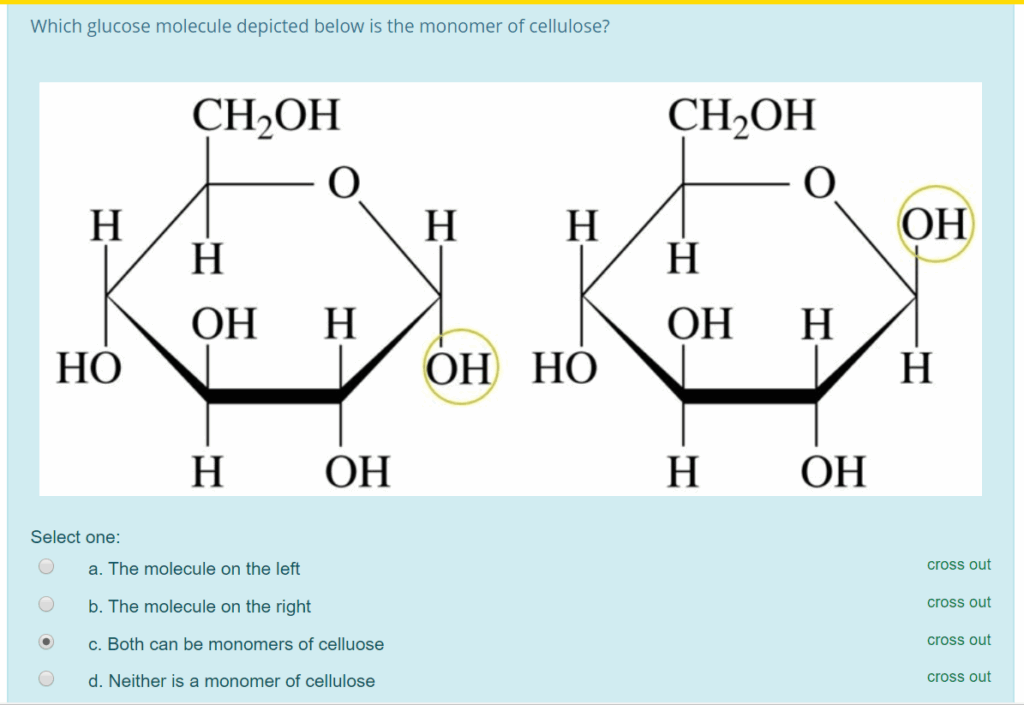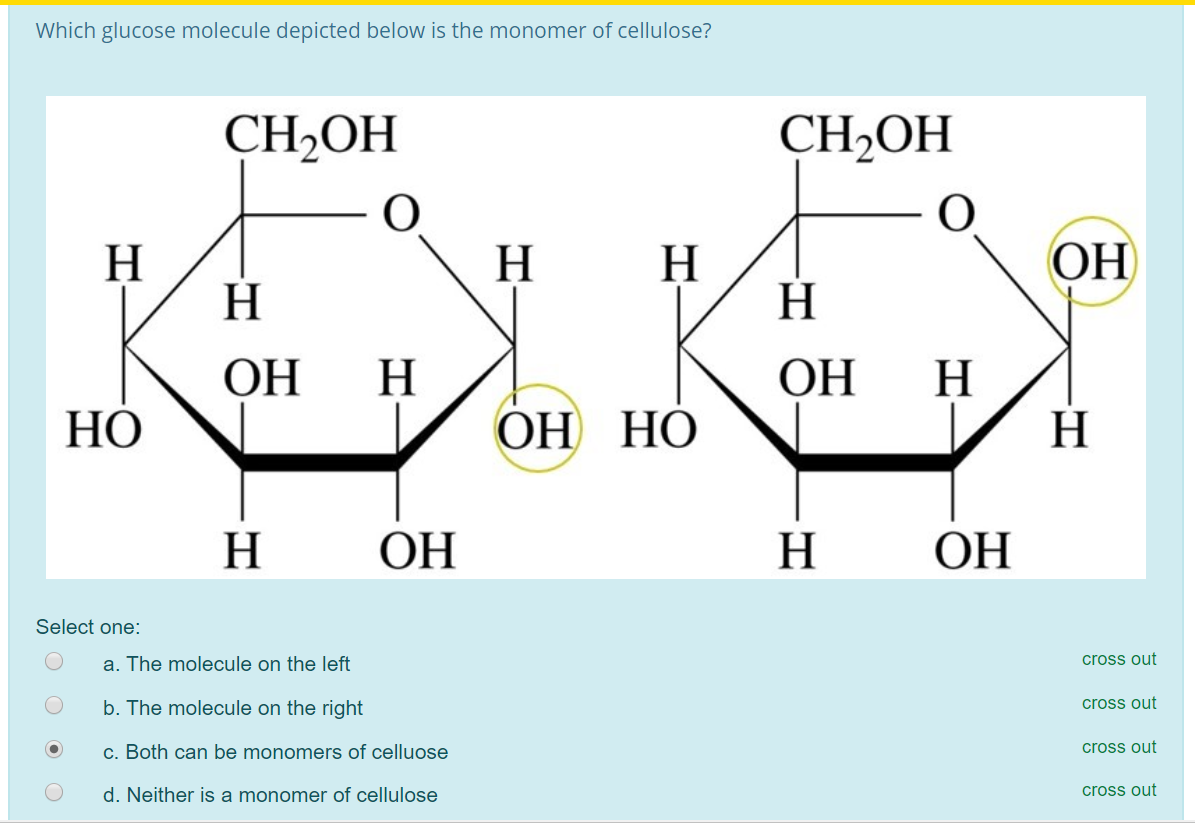
Is Glucose the Only Monomer of a Carbohydrate? Exploring Carbohydrate Composition
When discussing carbohydrates, a fundamental question often arises: is glucose the only monomer of a carbohydrate? The answer, while seemingly straightforward, delves into the fascinating complexity of carbohydrate chemistry. While glucose is a crucial and prevalent monosaccharide, it is certainly not the only building block of all carbohydrates. This article will explore the diverse world of carbohydrates, their monomeric components, and the crucial roles they play in biological systems.
Understanding Carbohydrates: An Overview
Carbohydrates, also known as saccharides, are organic compounds composed of carbon, hydrogen, and oxygen, typically in a ratio of 1:2:1. They serve as primary sources of energy for living organisms and play structural roles in cells and tissues. Carbohydrates are broadly classified into monosaccharides, disaccharides, oligosaccharides, and polysaccharides, based on the number of sugar units they contain.
Monosaccharides: The Basic Building Blocks
Monosaccharides, also known as simple sugars, are the simplest form of carbohydrates and cannot be hydrolyzed into smaller units. They are the monomers from which more complex carbohydrates are built. While glucose is a well-known monosaccharide, it is not the only one. Other important monosaccharides include fructose, galactose, ribose, and deoxyribose.
- Glucose: Often referred to as blood sugar, glucose is a primary energy source for cells. It is a hexose sugar, meaning it contains six carbon atoms.
- Fructose: Found in fruits and honey, fructose is another hexose sugar and is known for its sweetness.
- Galactose: This hexose sugar is a component of lactose, the sugar found in milk.
- Ribose: A pentose sugar (containing five carbon atoms), ribose is a crucial component of RNA (ribonucleic acid).
- Deoxyribose: Also a pentose sugar, deoxyribose is a component of DNA (deoxyribonucleic acid).
The diversity of monosaccharides highlights that glucose, while vital, is just one of several essential monomers that contribute to the vast array of carbohydrate structures and functions. [See also: The Role of Fructose in Energy Metabolism]
Disaccharides: Two Monosaccharides Linked Together
Disaccharides are formed when two monosaccharides are joined together through a glycosidic bond, a type of covalent bond that occurs between carbohydrate molecules. Common disaccharides include sucrose, lactose, and maltose.
- Sucrose: Table sugar, sucrose, is composed of glucose and fructose.
- Lactose: Milk sugar, lactose, is composed of glucose and galactose.
- Maltose: Malt sugar, maltose, is composed of two glucose units.
It’s important to note that even in disaccharides where glucose is present, it is combined with other monosaccharides, further demonstrating that carbohydrates are not exclusively composed of glucose monomers. The specific combination of monosaccharides determines the properties and functions of the disaccharide. [See also: Understanding Glycosidic Bonds in Carbohydrates]
Polysaccharides: Complex Carbohydrate Polymers
Polysaccharides are complex carbohydrates consisting of many monosaccharide units linked together. They can be homopolysaccharides, composed of only one type of monosaccharide, or heteropolysaccharides, composed of multiple types of monosaccharides. Examples of polysaccharides include starch, glycogen, cellulose, and chitin.
Homopolysaccharides
Homopolysaccharides are composed of repeating units of the same monosaccharide. While some homopolysaccharides are composed solely of glucose, others are not.
- Starch: A storage form of glucose in plants, starch is composed of amylose (linear chains of glucose) and amylopectin (branched chains of glucose).
- Glycogen: A storage form of glucose in animals, glycogen is similar to amylopectin but more highly branched.
- Cellulose: A structural component of plant cell walls, cellulose is composed of linear chains of glucose linked by β-1,4-glycosidic bonds.
In these examples, glucose is indeed the only monomer. However, this is not the case for all polysaccharides. Consider heteropolysaccharides.
Heteropolysaccharides
Heteropolysaccharides are composed of different types of monosaccharides. These complex carbohydrates play a variety of structural and functional roles.
- Hyaluronic Acid: Found in connective tissues, hyaluronic acid is composed of glucuronic acid and N-acetylglucosamine.
- Chondroitin Sulfate: Found in cartilage, chondroitin sulfate is composed of glucuronic acid and N-acetylgalactosamine.
- Heparin: An anticoagulant, heparin is composed of glucuronic acid and glucosamine, among other modified sugars.
These examples clearly demonstrate that carbohydrates are not exclusively composed of glucose. The presence of other monosaccharides, such as glucuronic acid, glucosamine, and galactosamine, expands the functional diversity of carbohydrates. The arrangement and types of monosaccharides in heteropolysaccharides determine their unique properties and biological roles. [See also: The Structural Role of Carbohydrates in Plants]
The Importance of Monosaccharide Diversity
The diversity of monosaccharides is crucial for the wide range of functions that carbohydrates perform in living organisms. Different monosaccharides have different chemical properties, which influence their interactions with other molecules and their roles in biological processes. For instance, the presence of fructose in sucrose contributes to its sweetness, while the β-1,4-glycosidic bonds in cellulose make it a strong and rigid structural component of plant cell walls.
The ability of carbohydrates to form complex structures with diverse monosaccharide compositions allows them to participate in a wide array of biological functions, including energy storage, structural support, cell signaling, and immune recognition. Therefore, limiting the understanding of carbohydrates to glucose as the only monomer would significantly underestimate their complexity and importance. [See also: Carbohydrates and Cell Signaling Pathways]
Conclusion: Beyond Glucose
In conclusion, while glucose is a vital and prevalent monosaccharide, it is not the only monomer of a carbohydrate. Carbohydrates encompass a diverse range of monosaccharides, disaccharides, and polysaccharides, each with unique compositions and functions. From fructose and galactose to ribose and deoxyribose, the variety of monosaccharides contributes to the wide array of roles that carbohydrates play in biological systems. Therefore, the assertion that glucose is the only monomer of a carbohydrate is inaccurate and overlooks the fascinating complexity of carbohydrate chemistry. Understanding the diverse building blocks of carbohydrates is essential for comprehending their crucial roles in energy metabolism, structural support, and various other biological processes. Recognizing that glucose is a key player but not the sole monomer provides a more complete and accurate picture of carbohydrate composition and function. The complexity of these molecules is a testament to the intricate design of biological systems, where even the smallest variations in molecular structure can lead to significant differences in function. Therefore, the next time you think about carbohydrates, remember that glucose is just one piece of a much larger and more fascinating puzzle. The world of carbohydrates extends far beyond glucose, encompassing a wide array of monosaccharides, disaccharides, and polysaccharides, each with its unique structure and function. Appreciating this diversity is crucial for a comprehensive understanding of the roles that carbohydrates play in life. Considering that glucose is a central component, it is easy to see why the question arises, but the answer lies in understanding the broader picture of carbohydrate chemistry. So, while glucose is important, it’s definitely not the only story when it comes to carbohydrate monomers. The variety of carbohydrates, each built from different combinations of monomers, contributes to the complexity and functionality of living systems. Remember, glucose is a star, but it’s not the whole show. Exploring the diverse world of monosaccharides and their roles in forming complex carbohydrates reveals the true complexity and importance of these essential biomolecules. The function of glucose is vital, but cannot be considered the only monomer of carbohydrates. Finally, when looking at carbohydrates, it is important to remember that glucose is not alone. The diverse world of sugars allows for complex structures and functions that are essential for life. The role of glucose is central, but the diversity of other monomers cannot be overlooked, and finally understanding that glucose is just one monomer, provides a better understanding of carbohydrates.

